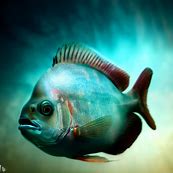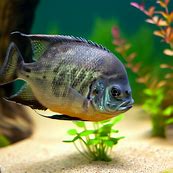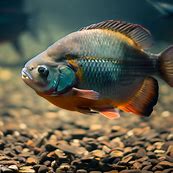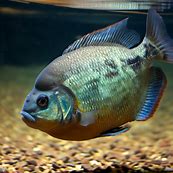The Ultimate Guide to SunFish Fishing: Techniques, Tips, and Tricks
On September 26, 2023 by Big Daddy
The Ultimate Guide to SunFish Fishing: Techniques, Tips, and Tricks
Sunfish fishing is a popular and rewarding pastime for anglers of all levels of experience. Whether you’re a beginner or an expert, this ultimate guide will provide you with the techniques, tips, and tricks you need to have a successful sunfish fishing trip.
When it comes to sunfish fishing, having the right equipment is crucial. From rods and reels to tackle selection and bait choices, every piece of gear can make a difference in your success on the water.
Knowing where and when to fish is also key. Sunfish are found in lakes and ponds across America, but understanding their habitat preferences can help you narrow down your search for the best spots. Additionally, being aware of weather conditions such as temperature and wind patterns can greatly impact your chances of hooking into some trophy-sized sunfish.
Stay tuned for more information on specific techniques like bottom fishing and bobber fishing, as well as tips on choosing the right live bait for bluegill and other types of sunfish. With this ultimate guide at your fingertips, you’ll be well-equipped to embark on your next sunfish adventure!
Fishing with the Right Equipment
When it comes to sunfish fishing, having the right equipment can make all the difference in your success on the water. First and foremost, you’ll want to have a good quality fishing rod and reel. Look for a lightweight combo that is sensitive enough to detect even the slightest nibble.
In addition to your rod and reel, there are a few other essential pieces of equipment you’ll need. A tackle box stocked with a variety of hooks, weights, and bobbers will come in handy for different fishing techniques. Don’t forget some extra line and scissors or pliers for cutting.
Don’t underestimate the importance of comfortable clothing and protective gear like sunglasses and sunscreen. Fishing can be an all-day activity, so making sure you’re prepared for any weather conditions is key.
Remember, investing in high-quality equipment will not only improve your chances of landing more sunfish but also enhance your overall fishing experience. So take the time to choose wisely before heading out on your next sunfish adventure!
Fishing in the Right Conditions
Another important factor is temperature. Sunfish are most active when the water temperature ranges between 70°F and 85°F. So, try to plan your fishing trips during warmer months when the sunfish are more likely to be feeding and actively biting.
Keep an eye on weather patterns. Stable weather with minimal wind and cloud cover is ideal for sunfish fishing. They are known to become less active during cold fronts or stormy conditions, so it’s best to wait for a clear day before heading out onto the water.
Remember, by selecting the right conditions – calm waters, optimal temperatures, and stable weather – you’ll greatly improve your chances of having a successful sunfish fishing excursion.
Choosing the Right Technique
When it comes to sunfish fishing, choosing the right technique can make all the difference in your success. With so many techniques available, it’s important to find one that suits your style and preferences. Whether you prefer casting, trolling, or fly fishing, there is a technique out there for everyone.
One popular technique for catching sunfish is using live bait. This involves attaching a small worm or insect to your hook and letting it float near the surface of the water. Sunfish are attracted to movement, so gently twitching your line can entice them to bite.
Another effective technique is using artificial lures such as jigs or spinners. These mimic small insects or fish and can be casted or trolled through the water. Experiment with different colors and sizes until you find what works best for you.
Remember, choosing the right technique may take some trial and error. Don’t be afraid to experiment and try new things until you find what works best for you on any given day of sunfish fishing adventure!
Tackle Selection—The Lighter The Tackle, The Better
When it comes to sunfish fishing, selecting the right tackle can make all the difference in your success. One important rule of thumb is that lighter tackle tends to yield better results. Why? Well, sunfish have delicate mouths and can be easily scared away by heavy equipment. So, opting for a lightweight setup will allow you to present your bait more naturally and increase your chances of getting a bite.
Another advantage of using lighter tackle is its sensitivity. With a sensitive rod and line, you’ll be able to feel even the slightest nibble or tap from a sunfish, giving you an edge in detecting bites and setting the hook at the right moment.
A light spinning reel paired with an ultra-light or light-action rod is ideal for targeting sunfish species like bluegill and pumpkinseed. This combination allows for precise casting accuracy while providing enough strength to handle these feisty fish without overpowering them. Remember, when it comes to tackle selection for sunfish fishing, less is definitely more!
Bait and Hooks—Keep Them Small
When it comes to sunfish fishing, one important tip is to keep your bait and hooks small. Why? Well, sunfish have relatively small mouths compared to other fish species. So, using large bait or hooks might not be as effective in enticing them to bite.
Opting for smaller bait and hooks allows you to present a more natural-looking offering that matches the size of their prey. You can try using tiny worms, crickets, or even bits of bread as bait. Pair this with a small hook like a size 8 or 10 and you’ll increase your chances of getting a nibble.
Remember, keeping your bait and hooks small doesn’t mean sacrificing success. In fact, it’s all about adapting your approach to match the preferences of these colorful freshwater fish!
Finding a Good Lake or Pond
When it comes to sunfish fishing, finding the right lake or pond can make all the difference in your success. But how do you know which body of water is going to yield those big catches? Well, here are some tips to help you find a good fishing spot.
Look for lakes or ponds that have a healthy ecosystem. A lake with plenty of aquatic vegetation and structure will attract more sunfish and provide them with food and shelter. Pay attention to areas with submerged logs, fallen trees, or rocky bottoms as these are prime spots for sunfish to hang out.
Consider the size of the lake or pond. Larger bodies of water tend to have a greater population of sunfish since they offer more space and resources for these fish. Look for lakes that are at least several acres in size.
Talk to local anglers or check online fishing forums for recommendations on good fishing spots in your area. These experienced fishermen can share valuable insights about where the best sunfish hotspots are located.
Remember that exploring different lakes and ponds is part of the fun! So get out there and start searching for your next favorite fishing spot.
Types of Live Bait for Bluegill and Sunfish
When it comes to catching bluegill and sunfish, using the right bait can make all the difference. These fish are known for their small mouths, so it’s important to choose bait that is bite-sized. Some popular live baits for bluegill and sunfish include worms, crickets, and grasshoppers. These insects are readily available at most bait shops and can be easily hooked onto a fishing line.
In addition to live insects, small minnows can also be effective baits for bluegill and sunfish. These tiny fish mimic the natural prey of these species and can entice them to strike. You can find minnows at local tackle stores or catch your own by using a small net.
Another option for live bait is mealworms or waxworms. These larvae are commonly used in angling because they are easy to handle and stay on the hook well. They have a strong scent that attracts bluegill and sunfish, making them irresistible targets.
Remember to keep your bait size appropriate for the fish you’re targeting, as smaller baits will increase your chances of success when fishing for bluegill and sunfish. Experiment with different types of live bait until you find what works best in your fishing spot!
Live Bait Fishing Techniques
When it comes to sunfish fishing, using live bait can be incredibly effective. There are a few different techniques you can employ to maximize your chances of success.
One popular technique is simply casting out your bait and letting it sit on the bottom. Sunfish are known for their curious nature, so this method often entices them to investigate and take a bite.
Another technique is slow trolling with live bait. This involves moving slowly through the water while dragging your bait behind you. The movement mimics natural prey and can trigger strikes from hungry sunfish.
Bobber fishing with live bait is another tried-and-true method. By suspending your bait at a specific depth using a bobber, you can precisely target where the sunfish are feeding.
Experiment with these live bait fishing techniques and see what works best for you in different situations on the water!
Bottom Fishing
One effective technique for catching sunfish is bottom fishing. This method involves placing your bait right on the lake or pond floor, where sunfish tend to congregate. To start, choose a lightweight rod and reel combo that allows for easy casting and reeling in of your catch. Make sure to use a light line as well, as this will help you feel even the slightest nibble from a sunfish.
When it comes to bait, opt for small pieces of worms or insects such as crickets or grasshoppers. These natural baits are irresistible to hungry sunfish lurking at the bottom of the water. You can use simple hooks and attach them securely to your bait.
Once you have everything set up, cast out your line and let it sink towards the bottom. Keep an eye on your line for any signs of movement or tension indicating a bite. When you feel something tugging on your line, give it a quick tug back to set the hook in place before reeling in your catch.
Remember that patience is key when bottom fishing for sunfish. It may take some time before you get a bite, but once you do, it’s all worth it! So grab your gear and head out to try this effective technique for yourself!
Bobber Fishing
Bobber Fishing is a popular technique used by many anglers when targeting Sunfish. This method involves suspending bait or lures at a predetermined depth using a bobber, also known as a float. The bobber serves as an indicator, alerting you to any bites from the fish below.
To set up for Bobber Fishing, start by attaching your preferred bait or lure to the end of your fishing line. Then, slide the bobber onto the line above the bait/lure and adjust its position based on your desired depth. Cast out into the water and wait patiently for that telltale sign of a bite – when the bobber suddenly dips beneath the surface!
One advantage of Bobber Fishing is its simplicity – it’s easy even for beginners to master this technique quickly. Plus, watching that bobber dance on top of the water can be quite exciting! So next time you’re out fishing for Sunfish, give Bobber Fishing a try and see if it helps you land more fish!
Rods and Reels
When it comes to sunfish fishing, having the right rods and reels can make all the difference. You want a rod that is lightweight and sensitive enough to detect even the slightest nibble from these feisty fish. Look for a medium or light action rod with a fast or moderate-fast taper. This will allow you to easily cast small lures or bait while still maintaining control during the fight.
As for reels, choose one that has a smooth drag system and is designed for freshwater fishing. Spinning reels are popular among sunfish anglers due to their versatility and ease of use. Opt for a reel size that matches your chosen rod, typically in the 1000-2500 range.
When selecting your rod and reel combo, consider factors such as durability, comfort, and balance. Test them out in-store if possible to ensure they feel comfortable in your hands before making a purchase. Remember, finding the perfect combination of rods and reels may take some trial-and-error but once you find what works best for you, it will greatly enhance your success on the water!
Fishing Line
When it comes to sunfish fishing, choosing the right fishing line is crucial for a successful day on the water. The type of fishing line you use can greatly impact your chances of landing these feisty fish. So what should you look for when selecting a fishing line?
First and foremost, consider the strength and weight capacity of the line. Sunfish may not be massive in size, but they can still put up quite a fight. Opting for a lightweight yet strong fishing line will help ensure that you don’t lose your catch.
Another factor to consider is visibility. Sunfish have keen eyesight and can often detect lines that are too visible in the water. Choosing a clear or low-visibility fishing line can make all the difference in fooling these cunning fish.
Think about the durability of the fishing line. As sunfish tend to live near structures like rocks or vegetation, there’s always a chance your line could get snagged or frayed. Opting for a durable and abrasion-resistant fishing line will increase its lifespan and save you from constant re-rigging.
Remember, choosing the right fishing line can significantly improve your chances of catching sunfish successfully!
Lures and Jigs
When it comes to lures and jigs for sunfish fishing, simplicity is key. These little fish have small mouths, so using smaller-sized lures and jigs will increase your chances of a successful catch. Opt for lightweight options that mimic the natural prey of sunfish, such as tiny insects or small minnows.
One popular choice among anglers is the crappie jig. These jigs come in various colors and sizes, but it’s best to stick with more subtle shades like white or silver. The slow fluttering action of these jigs entices sunfish to strike.
Another effective option is using soft plastic baits on a jig head. Worm imitations or small creature baits can be incredibly enticing to hungry sunfish. Experiment with different colors and movements until you find what works best in your fishing spot.
Remember, when selecting lures and jigs for sunfish fishing, go for smaller sizes that mimic their natural diet. Keep it simple yet enticing by choosing lightweights with subtle colors or lifelike patterns. With the right lure or jig, you’ll be reeling in those colorful sunfish in no time!
Sunfish Habitat
When it comes to sunfish fishing, understanding their habitat is crucial. Sunfish are typically found in freshwater lakes, ponds, and slow-moving rivers across North America. They prefer areas with vegetation such as reeds, lily pads, and submerged trees. These structures provide shade and cover for the fish, making them feel secure.
In lakes and ponds, you’ll often find sunfish near underwater structures like fallen logs or brush piles. These areas act as natural hiding spots for them to ambush prey or seek shelter from predators. When fishing in rivers or streams, look for calmer sections where the current slows down. Sunfish tend to congregate in these quieter areas where they can feed more easily.
Another important factor is water temperature. Sunfish thrive in warmer waters between 70-85 degrees Fahrenheit (21-29 degrees Celsius). During hotter summer months, they may move deeper into the water column seeking cooler temperatures.
Remember that each body of water is unique, so it’s essential to do some research beforehand or talk to local anglers who have experience fishing sunfish in your specific area. By understanding their favored habitats and adapting your approach accordingly, you increase your chances of a successful sunfish fishing trip!
Catching Sunfish in Current
When it comes to fishing for sunfish, understanding their behavior in different water conditions is essential. One such condition is fishing in current. Sunfish tend to follow the flow of the water, making them more active and eager to bite.
To successfully catch sunfish in current, you’ll need some strategic techniques. Position yourself upstream from where the fish are likely hiding. This way, your bait will drift naturally towards them, enticing a strike. Use lightweight tackle that won’t get swept away by the current but still allows for accurate casting and control.
It’s important to note that patience is key when fishing in currents as sunfish can be finicky at times. Keep experimenting with different baits and lures until you find what works best for attracting their attention amidst the moving waters!
Bluegill Spawning Season
Ah, the Bluegill Spawning Season—the time when these feisty little sunfish are at their most active and ready to breed. It’s an exciting time for anglers who know how to take advantage of this prime fishing opportunity. During the spawning season, which typically occurs in late spring or early summer, bluegill gather in large groups near shallow waters with plenty of vegetation. This is where they build their nests and lay their eggs.
When targeting bluegill during the spawning season, it’s important to remember that they become extremely territorial and protective of their nests. This means you’ll want to focus your efforts on areas where you spot signs of nesting activity—such as small depressions in the water bed or clusters of plants that have been disturbed.
To increase your chances of success during the Bluegill Spawning Season, try using smaller baits and hooks that mimic insects or small aquatic creatures. Bluegill are known for having a voracious appetite during this time, so presenting them with a tasty meal can be highly effective. Consider using live worms, crickets, or even tiny artificial lures that resemble minnows.
Remember: timing is everything when it comes to targeting bluegills during their spawning season. Make sure you’re aware of local regulations regarding fishing seasons and limits before heading out onto the water. With some patience and persistence—and a few tricks up your sleeve—you’ll soon find yourself reeling in those beautiful sunfish like a pro!
Ice Fishing for Sunfish
Ice fishing for sunfish is a thrilling and unique experience that can be enjoyed during the winter months. The frozen lakes and ponds provide a serene backdrop for anglers to test their skills in catching these feisty fish. But how do you go about ice fishing for sunfish? Here are some tips to get you started.
First, it’s important to find a suitable location on the ice where sunfish are known to gather. Look for areas with submerged vegetation or structures such as fallen trees or brush piles. These spots often attract schools of sunfish looking for food and shelter.
Next, equip yourself with the right gear for ice fishing. You’ll need an auger or ice drill to create holes in the ice, an ice fishing rod and reel combo specifically designed for this type of angling, and small jigs or baits that mimic the natural prey of sunfish.
Once you’ve drilled your hole and set up your equipment, it’s time to start jigging! Drop your bait into the water just above where you believe the sunfish are hiding. Use gentle movements of your rod tip to entice them into biting. Be patient, as sometimes it takes a bit of finesse before they strike.
Remember, always prioritize safety when venturing out onto frozen bodies of water. Check local regulations regarding ice thickness requirements and never go alone. With proper preparation and technique, ice fishing for sunfish can be an exhilarating adventure that yields great rewards!
Types of Sunfish in America
When it comes to sunfish fishing in America, there are several different types of sunfish that anglers can target. One popular variety is the bluegill, known for its vibrant colors and feisty nature. Bluegills can be found in lakes, ponds, and rivers across the country, making them a versatile species to pursue.
Another type of sunfish commonly found in America is the pumpkinseed. With its distinct orange-red spots on a dark green body, the pumpkinseed is not only beautiful but also a worthy adversary on the end of your line. They prefer clear waters with vegetation and are often caught near submerged structures.
We have the redear sunfish or shellcracker. This species gets its name from its specialized teeth used for crushing hard-shelled prey like snails and clams. Redear sunfish are typically larger than other sunfish varieties and can provide an exciting challenge for anglers seeking a trophy catch.
Whether you’re targeting bluegills, pumpkinseeds, or redear sunfish, each species offers unique characteristics that make them worth pursuing on your next fishing adventure. So grab your gear and head out to explore the diverse world of American sunfish!
Conclusion
H3: Sunfish fishing can be a rewarding and enjoyable experience for anglers of all skill levels. With the right equipment, techniques, and knowledge of their habitat, you can increase your chances of catching these feisty fish.
Remember to choose the right equipment suited for sunfish fishing, including light tackle and small bait and hooks. Fishing in the right conditions, such as during spawning season or in areas with ample vegetation, will also improve your success rate.
When it comes to technique, bottom fishing and bobber fishing are two popular methods that consistently yield results. Consider using live bait like worms or crickets to entice sunfish into biting.
Having a good understanding of sunfish habitats is key to finding them. Look for lakes or ponds with suitable structures like submerged logs or weed beds where they tend to gather.
And let’s not forget about ice fishing! During the winter months when many other species go dormant, you can still enjoy the thrill of catching sunfish through holes drilled in frozen bodies of water.
In America alone, there are several types of sunfish species waiting to be caught. From bluegill to redear sunfish, each has its own unique characteristics that make them an exciting target for anglers.
So grab your gear and head out on your next adventure—whether it’s casting off from shore or drilling through ice—to pursue these colorful freshwater fighters. Remember to respect nature while enjoying this timeless pursuit!
Happy angling!




















This is a perfect example of what James Jernigan talks about with AI.
Хорошая статья, в которой автор предлагает различные точки зрения и аргументы.
I don’t think the title of your article matches the content lol. Just kidding, mainly because I had some doubts after reading the article.
Thanks for sharing. I read many of your blog posts, cool, your blog is very good. https://www.binance.com/tr/register?ref=W0BCQMF1
I wish to show my appreciation for your kindness in support of men and women that absolutely need help on this field. Your very own dedication to getting the solution all around appeared to be definitely advantageous and has always encouraged associates like me to attain their targets. Your own informative suggestions entails this much to me and especially to my office workers. Warm regards; from all of us.
Thank you for your sharing. I am worried that I lack creative ideas. It is your article that makes me full of hope. Thank you. But, I have a question, can you help me?
Can I just say what a relief to find somebody who actually is aware of what theyre speaking about on the internet. You definitely know learn how to deliver a problem to mild and make it important. Extra folks must read this and perceive this side of the story. I cant consider youre not more in style because you definitely have the gift.
Your point of view caught my eye and was very interesting. Thanks. I have a question for you.
Can you be more specific about the content of your article? After reading it, I still have some doubts. Hope you can help me.